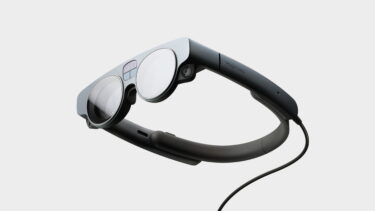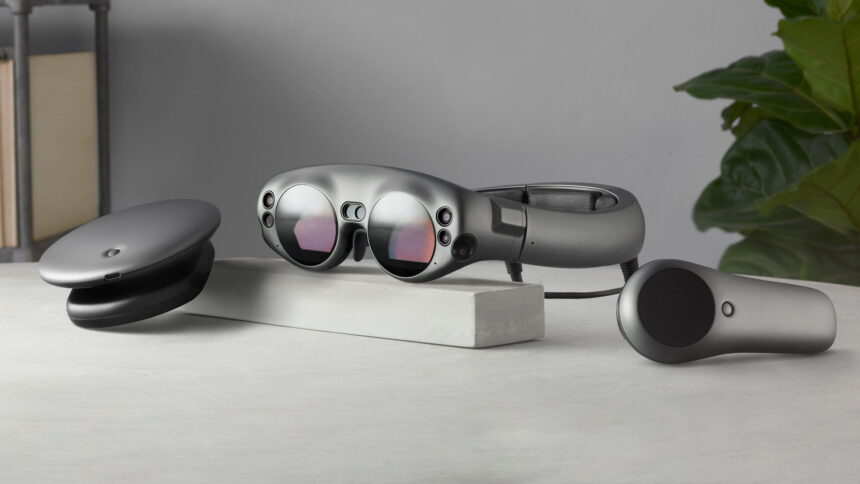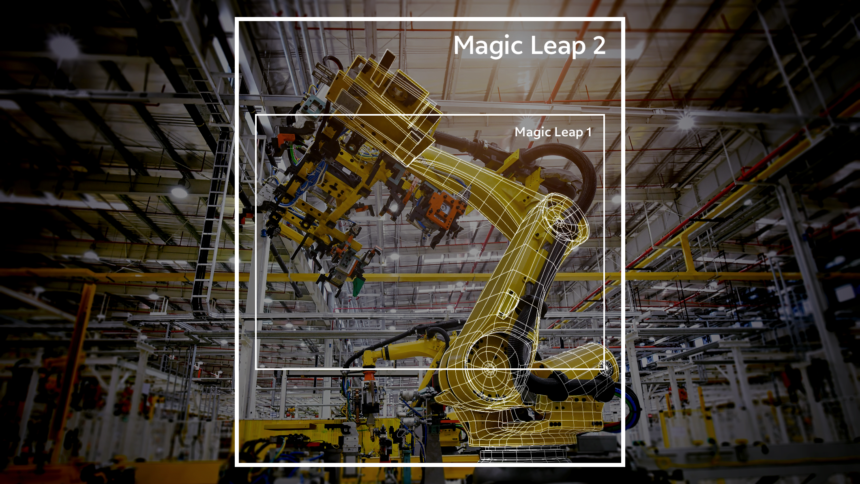Magic Leap 2: Market launch postponed

Update 12/22/2021:
In an interview with Bloomberg, CEO Peggy Johnson now cites mid-2022 as the market launch for Magic Leap 2. Originally, the new AR glasses should have been released in the first quarter.
Currently, many companies, including four in the healthcare sector, would be testing the device as part of an early access program and developing applications for the AR glasses, Johnson says.
Here's what the CEO had to say about a possible return to Magic Leap's original ambitions:
"The vision has narrowed just a little bit. I'm a firm believer that at some point we'll turn our attention back to end users and the entertainment space."
Form factor and cost factor would play less of a role for businesses than consumers, but in the future there would "certainly" be devices that end consumers could wear all day, with a form factor closer to traditional glasses.
Original article from October 12, 2021:
Magic Leap 2 launches, gets new million-dollar investment
Magic Leap gets another $500 million and unveils a new pair of AR glasses for businesses: the Magic Leap 2.
Magic Leap has fallen on hard times: after many years of tight secrecy and reality-defying hype, the company unveiled a pair of consumer AR glasses in late 2017 that didn't fully impress in terms of form factor or technology. And it came with a price tag of around $2,200. Magic Leap looked pale against Microsoft Hololens 2.
As a result, Magic Leap was barely able to sell AR glasses and came close to bankruptcy in the spring of 2020. Investors saved the company at the last second and persuaded CEO Rony Abovitz to resign.
In August 2020, former Microsoft manager Peggy Johnson took over the helm and continued the restructuring of the company that had already begun: in the future, Magic Leap was to target companies instead of end consumers and thus gain a more secure business foundation.

Magic Leap 1 (formerly Magic Leap One Creator Edition) launched in 2018. | Image: Magic Leap
Magic Leap back on track for success?
The refocus seems to be well on its way. In a blog post, Johnson sums up what's been achieved over the past twelve months: The new Magic Leap chief has replaced much of the leadership, added new enterprise customers in areas like training, manufacturing, and healthcare, and forged partnerships with Google, PTC, and Nvidia to help implement enterprise solutions.
The rebuild has paid off, with the new, more pragmatic Magic Leap winning over investors and landing another $500 million in venture capital.
This means that a staggering 3.5 billion US dollars have flowed into Magic Leap so far. With the new investment, the value of the company is put at two billion US dollars. It is not known who invested.
Magic Leap 2: Smaller and lighter than the predecessor glasses
Among other things, the fresh capital is to flow into the marketing of the Magic Leap 2. The new AR glasses, optimized for professional applications, were shown for the first time yesterday. It looks much more sober and simple than the Magic Leap 1 and is a good deal more compact.
You can see at least four optical tracking cameras, two facing forward, two facing front and side. The head mount is reminiscent of the predecessor model, and speakers are embedded in the bracket.
Magic Leap wanted to develop AR glasses that users could wear "all day, every day," the company writes. Accordingly, the Magic Leap 2 is billed as the"smallest and lightest AR device for enterprise." The slim form factor is also achieved by outsourcing the computing unit, as with its predecessor.
Judging from the first image, the new AR glasses still rely on a feed player that connects to the device via cable. It is not known whether Magic Leap 2 will also come with a controller or mainly rely on hand tracking.
Magic Leap 2 technology: No quantum leap
In general, there are only known a few details about the technology so far: The field of view has mainly grown vertically but remains relatively narrow, as with almost all AR glasses available on the market.
A new technology called dimming should allow the device to be used in bright environments. Presumably, the glasses automatically dim to make AR inserts more prominent. A display that glows brighter would be better, but that has yet to be invented.
According to Peggy Johnson, the new AR glasses are just another step toward highly sophisticated augmented reality: "I firmly believe that the next wave of digital transformation will be driven by AR. But that doesn't mean this transformation will be easy. AR still requires an incredible amount of innovation to solve the many challenges of merging the physical and digital worlds," Johnson writes.

The Magic Leap 2's field of view gains a few degrees, primarily vertically. | Image: Magic Leap
Consumer market not off the table after all?
The Magic Leap boss is also dropping the first hints of re-entry into the consumer market, albeit in an indirect way. "We have received several requests to license our technology and will actively pursue these opportunities if they help us improve our position and innovation in the enterprise market."
Johnson has said in the past that it has not given up on the consumer market for Magic Leap. For the mass market, she said, weight and power consumption must be further reduced. "We'll be back," Johnson said, referring to end users.
Magic Leap 2 is scheduled to launch in the first quarter of 2022. Dozens of partners and customers are already using the AR glasses as part of an early access program.
Magic Leap's main competitor is Microsoft: With Hololens 2, the company has already established AR glasses on the B2B market, which are also deeply integrated into the already widespread Microsoft software ecosystem. Thanks in no small part to a multibillion-dollar Pentagon contract, Hololens research and development is assured for years to come - a competitive advantage Magic Leap doesn't have.
Note: Links to online stores in articles can be so-called affiliate links. If you buy through this link, MIXED receives a commission from the provider. For you the price does not change.